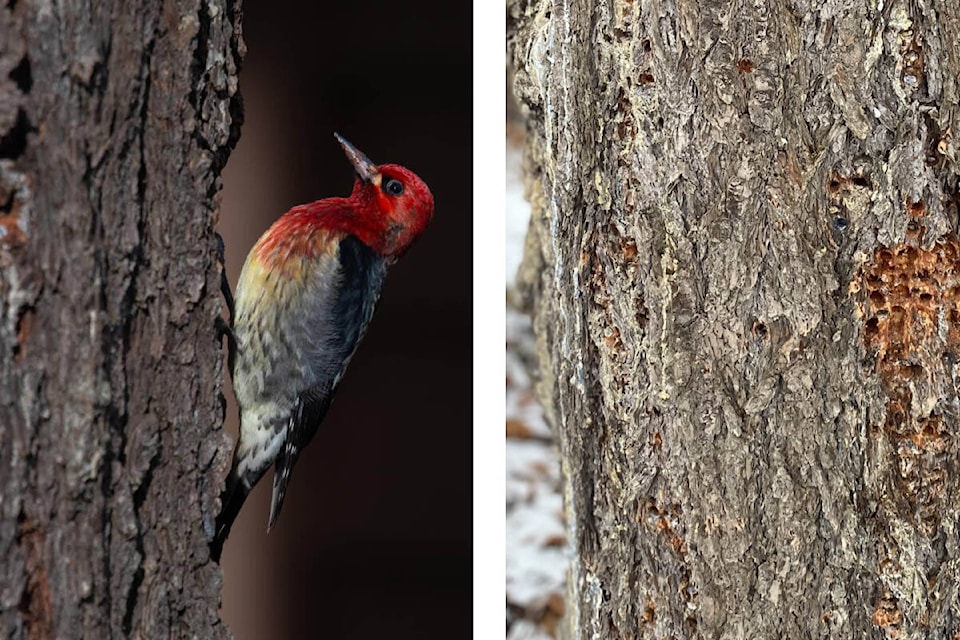By James Mackenzie
Special to Black Press
During this recent cold snap, a beautiful red-breasted sapsucker spent the week at the base of a Douglas Fir tree in our backyard.
Birds move, and not always in the ways we expect them to. We are all likely familiar with the classic north-south migration many waterfowl and songbirds undergo every year, but other members of our avian community have different migratory strategies.
Red-breasted sapsuckers, as well as Steller’s jays, dark-eyed juncos, and varied thrush, are often altitudinal migrants in our region. In the winter our backyards and urban parks play sanctuary for these alpine-loving birds. And, in the summer, a dormant habitat explodes into life and opportunity. For many birds, the trade-off is this: chances of survival are greater and food more available downslope but travelling is dangerous and the birds that stick it out closest to their breeding range can reach the best territories first in the spring.
“My” sapsucker has returned to the same location on the same tree three winters in a row but only when true winter temperatures arrive. As soon as my thermostat bumps up above zero degrees again, the sapsucker is gone. I am fairly confident through studying its habits and my photographs that the same bird returns each year.
Understanding this bird as an individual can highlight some of the specific challenges all altitudinal migrants face when descending into the lowlands. For example, I notice that the sapsucker forages close to the ground (i.e. cat attack height). I also notice that whenever the sapsucker leaves my yard, it flies over my neighbour’s house, always quite close to a large window. If the bird were being chased by a predator, it might panic and collide with said window. Finally, I hope that the sapsucker flies high when it moves and avoids the dangers of cars on the road, not to mention the litany of hawks and falcons that patrol our valleys.
Birds that migrate use many different habitat types. By providing a bird-friendly stopover site or a winter sanctuary, you are supporting nature and increasing your chances of seeing beauties like this red-breasted sapsucker.
James MacKenzie is a volunteer for the Mountainaire Avian Rescue Society (MARS)



